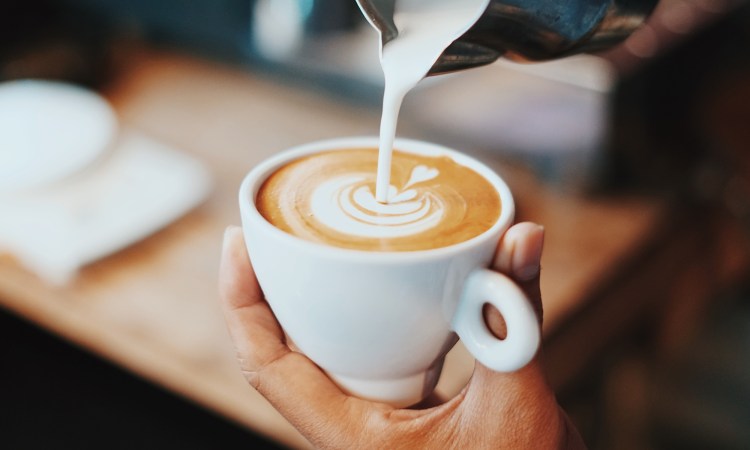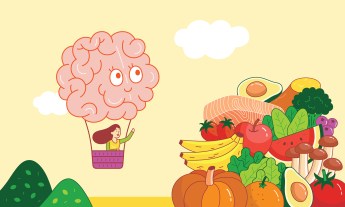
A classic cup of joe. A shot of espresso. Frothy and flooded with pumpkin spice syrup.
Whatever your preference, if you’re reading this story, chances are, drinking coffee is among your daily rituals. Everyday, people drink more than two billion cups worldwide, and experts predict that demand for it could triple by mid-century.
Coffee consumption is highest in Europe and North America. In the US, 66 percent of adults drink coffee every day — more than any other beverage, including water — and in the UK, coffee is now officially as popular as tea.
But it’s the Netherlands and Nordic nations who routinely top the charts for most-caffeinated crowd, with the Dutch, Finns and Swedes consuming 8.3 kg (18.3 lb), 7.8 kg (17.2 lb) and 7.6 kg (16.8 lb) coffee per person in 2020. Compare that with Italians’ 4.7 kg (10.4 lb) or Americans’ 3.5 kg (7.7 lb) in that same time period.
While coffee is grown in more than 70 countries, nearly 75 percent of the world’s harvest comes from just five top-producing countries: Brazil, Vietnam, Colombia, Indonesia and Ethiopia. These countries are all located in the “bean belt” — a swath of land between the Tropics of Capricorn and Cancer where conditions, at least for the time being, are ideal for cultivating coffee. (Fun fact: Cacao — which is made into chocolate — grows in this very same belt.) The tropical forests found in the bean belt are some of the most biologically diverse places on the planet.
However, as coffee consumption has risen — by more than 60 percent since the 1990s — farmers in these regions have found themselves under pressure to increase production at the expense of the environment and workers. From deforestation to pesticide use, study after study shows that our thirst for coffee harms the planet and exploits millions of people in some of the poorest parts of the world.
So what can we do, as individuals, to reduce the environmental and social impact of our coffee fix? Read on.
How coffee production hurts the environment
There are two main types of coffee growing today: Arabica and Robusta. Arabica, which originated in the highlands of Ethiopia, is prized for its smooth, complex flavor profile (compared to Robusta’s bitter notes) — and it fetches a higher price. When you order a latte at your local boutique coffee shop, it’s Arabica you’re drinking.
Arabica makes up about 60 percent of the world’s coffee production. To grow well, it requires shade, so traditional coffee farms intersperse trees of different types and heights among the coffee plants. Robusta is a hardier crop that has been trained to grow in the sun, allowing farmers to plant it as a high-density monocrop on deforested land. Vietnam, whose share of global coffee production jumped from 3 to 17 percent over the past three decades, produces Robusta almost exclusively. As global demand for coffee soars, farmers everywhere are motivated to maximize their yield by switching to sun-grown production.
But this switch comes with steep environmental costs. Shade-grown coffee plantations are “the next best thing to a natural forest,” according to the Smithsonian Migratory Bird Center. The leafy canopy sequesters carbon from the atmosphere and shields the soil from heavy rains; the trees’ root systems filter water and hold the soil together; fallen leaves act as natural fertilizer as they mulch; and the lush mixed foliage provides a habitat for pollinating insects and pest-eating birds.
By contrast, sun-grown crops must be doused in chemical pesticides, which inevitably find their way into local waterways. And when the crop is harvested, the bare, depleted soil is easily eroded by wind and rain.
At last year’s COP26 UN global climate summit, more than 100 world leaders pledged to end deforestation by 2030. But unless farmers can significantly increase their yield per hectare, the land area planted with coffee will need to at least double by mid-century to meet demand, threatening some of the world’s last remaining intact forests. Today, 60 percent of the land that will be suitable for growing coffee in 2050 is forested — but only 20 percent of that is under any kind of formal protection.
Meanwhile, experts predict that climate change on its current course will shorten the rainy season in the bean belt, leading to droughts and failed crops. Rising global temperatures could slash the land area suitable for growing coffee by 50 percent by 2050. In Latin America, that figure could be as high as 88 percent.
Coffee processing also uses significant amounts of fresh water to de-pulp and wash the beans before roasting. It takes 140 liters of water (around 37 gallons) to produce 125ml (or 4.2 oz) of coffee, according to the Water Footprint Network. That’s more than it takes to produce the same volume of wine, and nearly ten times as much as the same volume of tea.
And as the coffee-quaffing tastes of the global North become ever-more refined, roasters are ditching the cargo ships and importing fresher coffee via freight flights — which release an estimated 100 times more CO2 per km traveled.
The high human costs of producing coffee
On top of being resource-intensive, coffee is labor-intensive at almost all stages of production. Around 125 million people worldwide depend on coffee for their livelihoods. With a global market value of $102 billion, coffee is big business. But many of the estimated 25 million smallholder farmers who produce 80 percent of the world’s crop struggle to earn a reliable living. Nearly half live below the international poverty line, according to one report, and more than one-fifth live in extreme poverty.
The inequities are driven by coffee’s complex supply chain. Beans typically pass through dozens of hands on their journey from farm to cup — from growers and traders, all the way to roasters and retailers. More than 90 percent of coffee is green when it’s exported from its origin countries, meaning that processing and roasting — steps that add much of the value to the finished product — take place elsewhere. In the last 30 years, exports of processed coffee from rich, non-growing countries in the global North, such as the United States (home of Starbucks) and Switzerland (home of Nestlé) have exploded, allowing these countries to capture a major slice of coffee’s market value.
The upshot: Today, more than a third of all the roasted coffee exported is controlled by 10 gargantuan global roasters. Farmers typically receive 7 – 10 percent — and as little as 1 percent — of the retail price of each kg of coffee sold. Most have no idea where their beans end up or how much they sell for.
Farmers’ struggles are compounded by the fact that coffee is a boom-and-bust commodity, vulnerable to poor weather and pests. This creates an unstable market with recurring supply-demand imbalances that drive wild fluctuations in price. This market volatility — exacerbated by economic crises, climate change, political instability, and conflict — can be ruinous for farmers, who are unable to predict their income and budget for the year ahead.
What’s more, the conditions that workers endure can be grueling: long days in intense heat, performing manual labor with sharp tools and noxious chemicals. Despite these hazards, some pickers find themselves with little choice but to rope in their children to help them meet punishing daily quotas.
In 2020, one investigation found children — some of whom looked as young as eight — working 40-hour weeks picking coffee on plantations that supply Starbucks and Nespresso. The US Department of Labor lists more than a dozen countries where coffee farms have been caught using child labor, including four of the top five producing nations. Several regions have also been flagged for human rights abuses including forced labor, debt bondage, violence and degrading and unsanitary working conditions.
4 ways to be a more responsible coffee drinker
If all of this leaves a bitter taste in your mouth, you’re not alone. Coffee companies have paid considerable lip service to their commitment to sustainability goals but this is yet to translate into meaningful change, according to the 2020 Coffee Barometer, a report published by a coalition of international NGOs.
But there are choices you can make as an individual to reduce the impact of your cup — here are four ways to make a difference:
1: Buy certified
Coffee certifications can help you find coffee produced using farming practices that meet environmental, social or economic sustainability standards. There’s a dizzying array to choose from, but some of the best-regarded certifications are Fairtrade, Alliance, 4C and Smithsonian Bird Friendly.
Each scheme prioritizes different aspects of sustainability — and their focus can shift — so be sure to stay up to date and pick one that aligns with your values.
2: Know your coffee
While certifications are a good place to start, they aren’t a silver bullet. Even certified supply chains can be plagued by non-compliance and certifiers can quietly weaken their criteria over time. Becoming certified can also be prohibitively expensive for farmers, even as they strive for sustainability. In 2018, only 31 percent of all coffee was certified but a further 18 percent was “potentially compliant,” so it’s worth digging a little deeper.
Initiatives such as The Pledge aim to improve farmers’ bottom line by encouraging roasters to be transparent about the prices they pay. Many independent coffee shops also have close relationships with their growers and roasters, so don’t be shy to ask questions directly. Read the labels closely, or reach out to your favorite roaster/cafe through social media and find out: Is their coffee shade-grown or sun-grown? Do the farms use chemical pesticides and fertilizers? Are there any social or environmental initiatives in place?
3: Consider your milk
Dairy production is second only to meat in terms of its climate impacts, so it’s worth considering the entire contents of your cup. Studies show that the greenhouse gas emissions associated with a standard latte are between two and four times as high as those from a standard espresso.
If you can’t forego the milk, you can slash its climate impact by two-thirds by picking one of a variety of plant-based options.
4: Do sweat the small stuff
As much as 70 percent of your cup’s environmental impact is tied to the beans and how they’re cultivated, so it makes sense to focus most of your attention there. But small actions add up, so avoid non-recyclable coffee pods and bulky pre-made drinks that take an inordinate amount of fuel to ship.
Finally, don’t underestimate the power of a simple reusable cup. When you take yours into a café, you’re doing more than saving a disposable cup from the landfill — you’re also signaling your values to companies that want your business.
We know this works to move the needle. Case in point: Starbucks — the world’s largest coffee chain, which doled out an estimated 7 billion single-use cups in 2021 — recently piloted borrow-a-cup programs in Seattle, London, Tokyo, Queenstown and Singapore, and in South Korea the company plans to phase out single-use cups entirely by 2025.
Thirsty for more coffee-related content? Watch this TED Original video about how caffeine and alcohol affect your body:











